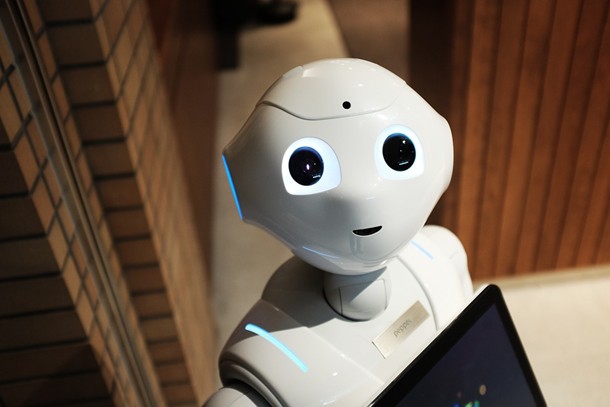How Robotics is Improving Healthcare

The idea of robotics in healthcare has been around for a while. When it was first conceived, many believed that by now robots would be leading hospitals — serving our needs in every aspect of our health. Although we are still a far cry away from that, robotics within hospitals has come a long way.
Today, robots can be found in many hospital settings around the country and the globe. They work in a variety of settings and help healthcare professionals in more ways than many of us can even begin to imagine. Robots are vital parts of the healthcare system and are doing a lot to improve health outcomes.
For some, this idea is somewhat scary. After all, there are more than a few sci-fi novels and movies that warn of the dangers of letting technology become too advanced. However, we are discovering that robots actually have more to offer than we ever really imagined.
Keeping Up with Need
There is no mistaking the incredible shortage of medical professionals we are facing. With baby boomers retiring and an expected increase in healthcare needs, there is a greater demand for nurses, doctors, and medical support staff with IT and technical experience than ever before. Throw the COVID-19 pandemic and associated medical staff burnout on top of it and we are looking at a real staffing disaster.
One of the primary ways in which robots can help improve healthcare is by alleviating some of the shortages. Many of them are not working in roles where they even interact directly with patients. Instead, they are employed in positions that take some of the workload off of human doctors and nurses, which allows them to spend more time with their patients.
There are multiple examples of this in action. Some robots are employed to shoot X-rays that will disinfect rooms and equipment. Others are delivery robots, which are used to bring supplies from bed linens to lunches to medications where they need to go. Overall, these tools are cheaper, faster, and more effective than humans, and they free up professionals to focus on more significant tasks.
Advanced Techniques
Beyond simple delivery and cleaning tasks, other robots can serve much more advanced purposes. For instance, nearly half of all hospitals in the U.S. employs some sort of surgical robot that assists doctors with precise procedures. Experts estimate that this realm is the most likely to experience growth in robotics use in the coming decades.
Surgical robots can help in all sorts of procedures from neurosurgery, to knee replacements, to laser bone ablation. The da Vinci system — one of the most highly sought-after surgical robotic systems — is a general surgical robot that can perform tasks that help with a myriad of surgical procedures including urological, bariatric, and gynecological ones. Furthermore, numerous robots have been designed to help with rehabilitation work after major surgery or a life-changing medical event.
Researchers are currently working to develop all sorts of other techniques that can incorporate robots to improve health outcomes. One interesting example comes from the dental world. Scientists are currently working on microbots controlled with magnets that can remove unhealthy biofilms and plaque buildup in difficult-to-reach parts of the mouth. This would vastly improve dental health for millions.
More Support Than Imagined
Though there is certainly an abundance of jobs that robots can handle, there are some that are a bit more human than others. For example, robots have also increasingly been employed as caretakers for patients. These support robots, as they are known, provide company and emotional support to people in need.
Such robots have been a surprising hit in many nursing homes across the country. It turns out that many seniors are perfectly willing to interact with a robot and some even seek out its company. Unlike many people, robots are not judgmental, they never sleep, and they are always great listeners. Numerous studies have found time and time again that robots are providing real emotional support to seniors in nursing homes when staff is attending to other matters.
In the wake of the COVID-19 pandemic, other robots have been employed to help with the incredible task of comforting people that are experiencing struggles with isolation. Last year, scientists in Hong Kong introduced Grace, a robot with surprisingly human looks and emotions, to help with social stimulation and diagnostics. The goal is to relieve some of the burden for frontline workers while still providing high-quality care in hospitals around the globe.
Hospitals have been incorporating robots of all shapes, sizes, and functions for years. These uses include all sorts of things such as disinfection, sorting equipment, delivery, surgical uses, and emotional support. Advances in technology and development are leading to greater robotic adoption in healthcare settings.
Thanks for helping to keep our community civil!
This post is an advertisement, or vandalism. It is not useful or relevant to the current topic.
You flagged this as spam. Undo flag.Flag Post


